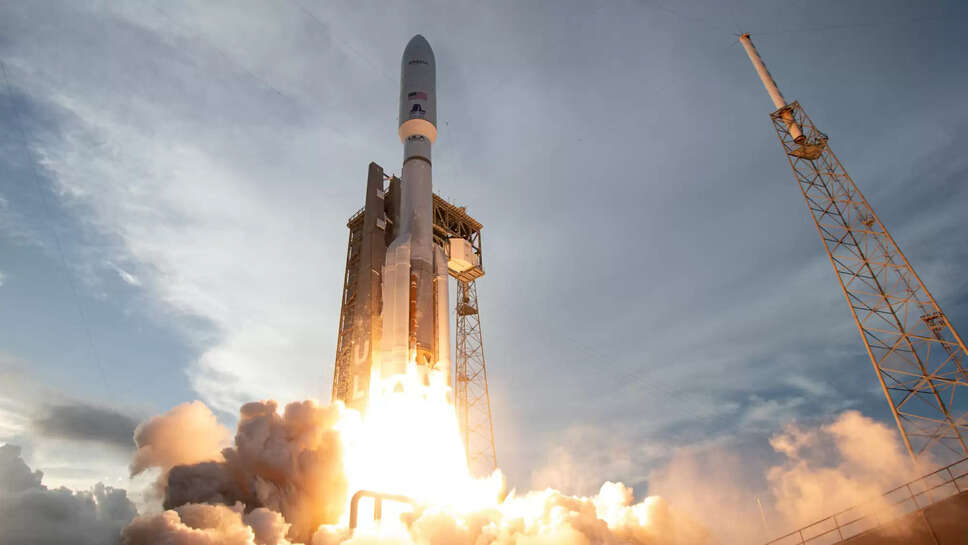Elon Musk’s SpaceX Sends Jeff Bezos’s Internet Dream Into Space

In a move that signals a surprising level of cooperation between two fierce tech titans, Elon Musk’s SpaceX has successfully launched a batch of 24 Amazon Kuiper satellites into orbit. This rare alignment of business interests between Musk and Amazon founder Jeff Bezos—two billionaires often at odds in the space and tech sectors—has captured global attention.
The launch, conducted from California’s Vandenberg Space Force Base, is a pivotal moment for Amazon’s ambitious Project Kuiper, the e-commerce giant’s multibillion-dollar initiative aimed at deploying a constellation of low-Earth orbit (LEO) satellites to deliver high-speed internet around the globe, especially in underserved and remote regions.
A Business Rivalry Suspended—For Now
The collaboration between SpaceX and Amazon is unexpected, given their long-standing competition in both the tech and aerospace arenas. While Musk and Bezos frequently trade jabs publicly, especially regarding their rival space ventures—SpaceX and Blue Origin—this moment marks a pragmatic pause in their rivalry.
Amazon had previously signed launch contracts with United Launch Alliance (ULA), Arianespace, and Blue Origin, but those companies have faced delays in readying their rockets. With its Falcon 9 rocket highly proven and available on short notice, SpaceX emerged as the most reliable and immediate option to keep Kuiper's deployment timeline on track.
This arrangement, though temporary, demonstrates that even the most intense competitors can find common ground when the stakes are high and timelines tight.
What Is Project Kuiper?
Project Kuiper is Amazon’s answer to global connectivity. The initiative aims to deploy more than 3,200 satellites in LEO to provide internet access to areas currently lacking reliable broadband. The system is designed to compete directly with Starlink, SpaceX’s own satellite internet constellation, which already has thousands of satellites in orbit and millions of users worldwide.
With this launch, Amazon is now moving into operational territory after earlier test deployments. The 24 satellites aboard the SpaceX rocket represent an important phase in Amazon's plan to have at least half of the total Kuiper constellation in orbit by mid-2026, a timeline mandated by the Federal Communications Commission (FCC).
The Launch Itself
The 24 Kuiper satellites were launched aboard a SpaceX Falcon 9 rocket, which has become the workhorse of modern commercial spaceflight. The rocket lifted off smoothly, and shortly afterward, its reusable first-stage booster returned to Earth with a precision landing, further showcasing SpaceX’s unmatched reusability prowess.
Each satellite aboard the rocket is equipped with advanced antennas and on-board processing capabilities. They are designed to create a mesh network in orbit, relaying internet data down to ground stations and user terminals that Amazon plans to provide to subscribers.
Although the Kuiper satellites are still in early deployment, they are fully functional models, not just test units. This signifies Amazon’s confidence in its hardware and readiness to scale the system rapidly.
The Bigger Picture: LEO Broadband Race
The LEO broadband market is becoming one of the most closely watched technology frontiers. As nations and corporations vie to establish dominance in this arena, satellite internet constellations are no longer just about connectivity—they are about geopolitical influence, data sovereignty, and global competition.
SpaceX’s Starlink is already operational in over 70 countries. Amazon’s Kuiper, while years behind, has the advantage of financial muscle, cloud infrastructure integration via Amazon Web Services (AWS), and global distribution channels through its retail empire. Microsoft and other tech giants are also watching closely, potentially considering partnerships or rival programs of their own.
This particular launch by SpaceX for Amazon may be the first of several, as Kuiper’s rollout ramps up. Despite being competitors, SpaceX’s ability to launch satellites efficiently and frequently makes it a go-to option for commercial payloads—even those that challenge its own businesses.
Strategic Implications
This mission has more than just technological consequences. It represents a unique moment in Silicon Valley dynamics where adversaries become enablers—at least temporarily.
For Amazon, this collaboration buys precious time and momentum. Delays in other launch vehicles, including its own investment in Blue Origin’s New Glenn rocket, have created a bottleneck. Working with SpaceX may be a calculated compromise that prevents Kuiper from missing regulatory deadlines and market opportunities.
For SpaceX, the decision to launch a rival’s satellites might appear counterintuitive. However, the economics of spaceflight—where maximizing rocket utilization and profitability are key—make the move logical. Plus, SpaceX maintains a massive lead in operational satellites and subscriber base with Starlink, which may provide enough confidence that it can afford to help its closest competitor without losing its dominant position.
Technical Challenges and Road Ahead
Despite the excitement surrounding the launch, many hurdles remain. Satellite deployment is only the beginning. Amazon will need to ensure flawless operation of its network, establish a viable pricing model, and roll out ground infrastructure quickly.
Additionally, competition from Starlink is not just technological—it’s regulatory and commercial. Musk’s network already enjoys regulatory approvals in many countries and a head start on customer trust. Kuiper must now prove it can offer equal or superior speed, latency, and affordability.
On the environmental front, the rapid deployment of thousands of satellites raises concerns about space debris and long-term orbital sustainability. Both Starlink and Kuiper have pledged to follow best practices in de-orbiting defunct satellites and avoiding collisions, but watchdogs continue to raise red flags as more megaconstellations go live.
Could This Lead to More Cooperation?
While this launch is a pragmatic arrangement rather than a signal of a long-term partnership, it does open the door to future possibilities. As the space economy grows, shared infrastructure, cross-licensing agreements, and even joint missions could become more common—even between rivals.
Some analysts suggest that SpaceX’s willingness to collaborate here reflects a broader maturity in the industry, where interoperability and global reach matter more than protecting turf.
Still, Elon Musk has remained publicly silent on the Amazon launch, while Jeff Bezos’s team has described the mission as “mission-critical” but stopped short of expressing long-term alignment with SpaceX.
In a space race where ambition often trumps rivalry, this joint effort between Amazon and SpaceX is a landmark moment. It shows that the business of space is no longer about singular visions or egos, but about complex ecosystems that sometimes demand collaboration among competitors.
The launch of 24 Kuiper satellites aboard a SpaceX rocket may seem like just another step in the race to blanket the globe with internet, but it represents much more: an evolution in how power players in tech navigate competition, pragmatism, and progress—beyond Earth’s boundaries.
